Physical Address
304 North Cardinal St.
Dorchester Center, MA 02124
On completion of this chapter, you should be able to:
Define the characteristics and causes of mitral regurgitation
Know how to calculate the proximal isovelocity surface area method
Describe the common causes of mitral stenosis
Explain the causes of aortic regurgitation
List the echocardiographic features of acute versus chronic aortic regurgitation
State the three types of aortic stenosis and their echocardiographic features
Explain how to calculate the aortic valve area
Define aortic aneurysm
State the difference between a true aneurysm and a pseudoaneurysm
Describe the echocardiographic findings in aortic dissection
This chapter focuses on left-sided valvular heart disease, namely mitral regurgitation, mitral stenosis, aortic valve insufficiency, and aortic stenosis, as well as a brief discussion of aortic abnormalities. The normal anatomy of the valves has been presented in Chapter 32 .
Recall that the mitral apparatus consists of two leaflets (anterior and posterior), the annulus, chordae tendineae, and papillary muscles ( Fig. 33.1 ). The anterior and posterior leaflets are pliable, with chordae tendineae attached to the tips of the leaflets. The chordae tendineae are attached to the anterior and posterior papillary muscles that are attached to the left ventricular myocardium. The mitral leaflets open in diastole and close in systole. The thickness of the leaflets should measure less than 4 mm. The anterior and posterior leaflets are further classified according to their scallop location ( Fig. 33.2 ).
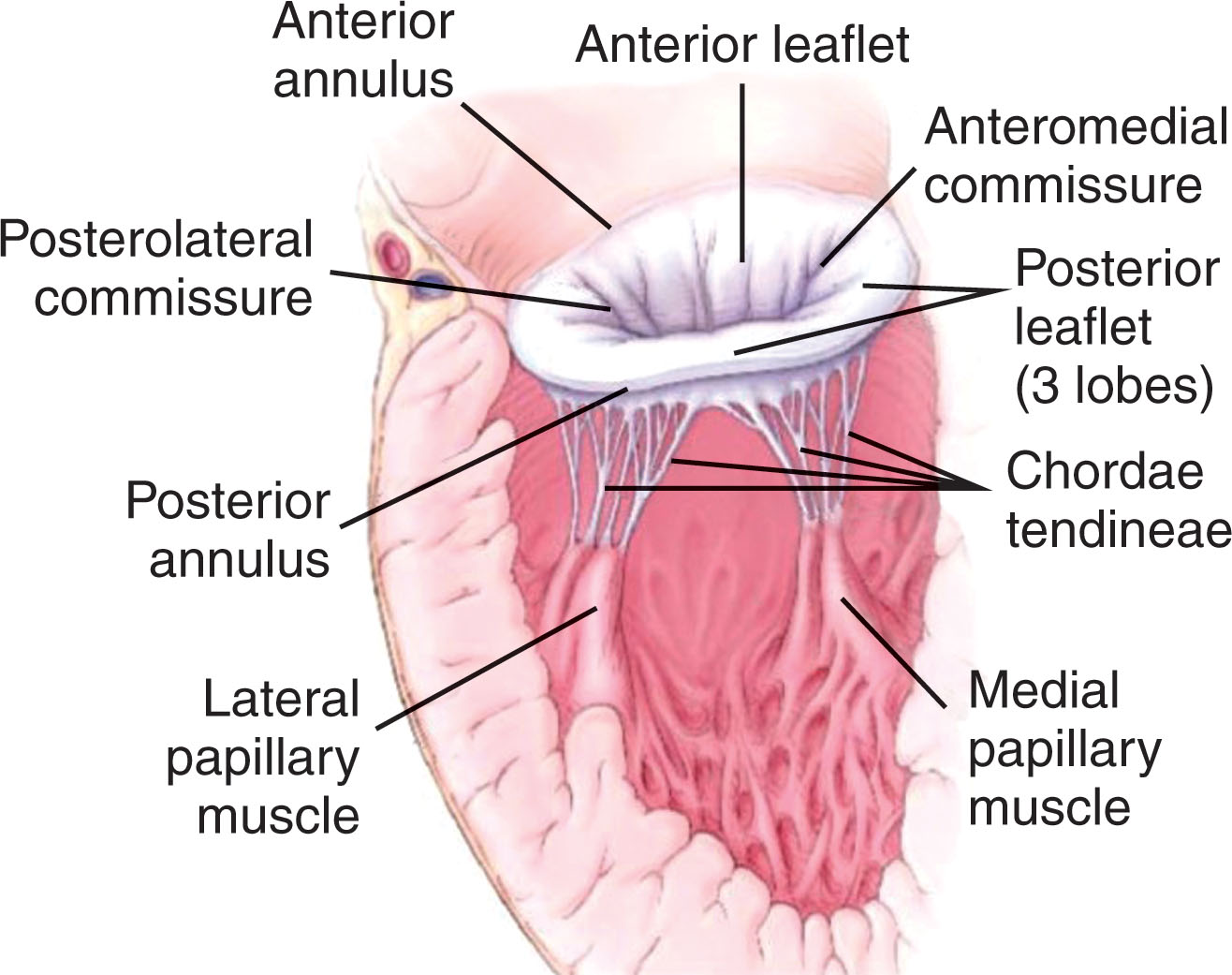

Mitral regurgitation is defined as the systolic retrograde flow from the left ventricle into the left atrium. This occurs when there is dysfunction or altered anatomy of the mitral annulus, the mitral leaflets, the chordae, the papillary muscles, or the left ventricular myocardium. Mitral regurgitation occurs secondary to the reduction or elimination of the normal systolic coaptation between the anterior and posterior mitral leaflets. If the left atrium or ventricle is dilated, annular dilation may occur, which may result in poor mitral leaflet coaptation. Calcification of the mitral annulus also may cause mitral regurgitation.
Various diseases that may affect the mitral leaflets, such as myxomatous disease, rheumatic disease, endocarditis, Marfan syndrome, infiltrative diseases, and systemic inflammatory disorders, may also alter the normal coaptation of the mitral leaflets, which results in regurgitation.
The functional classification of mitral regurgitation is known as Carpentier’s classification with three specific types: type I shows normal leaflet motion with the mitral regurgitation due to annular dilation, perforation, or cleft; type II shows excessive leaflet motion due to mitral valve prolapse or chordal rupture; and type III shows restricted leaflet motion due to rheumatic heart disease or dilated cardiomyopathy ( Fig. 33.3 ).
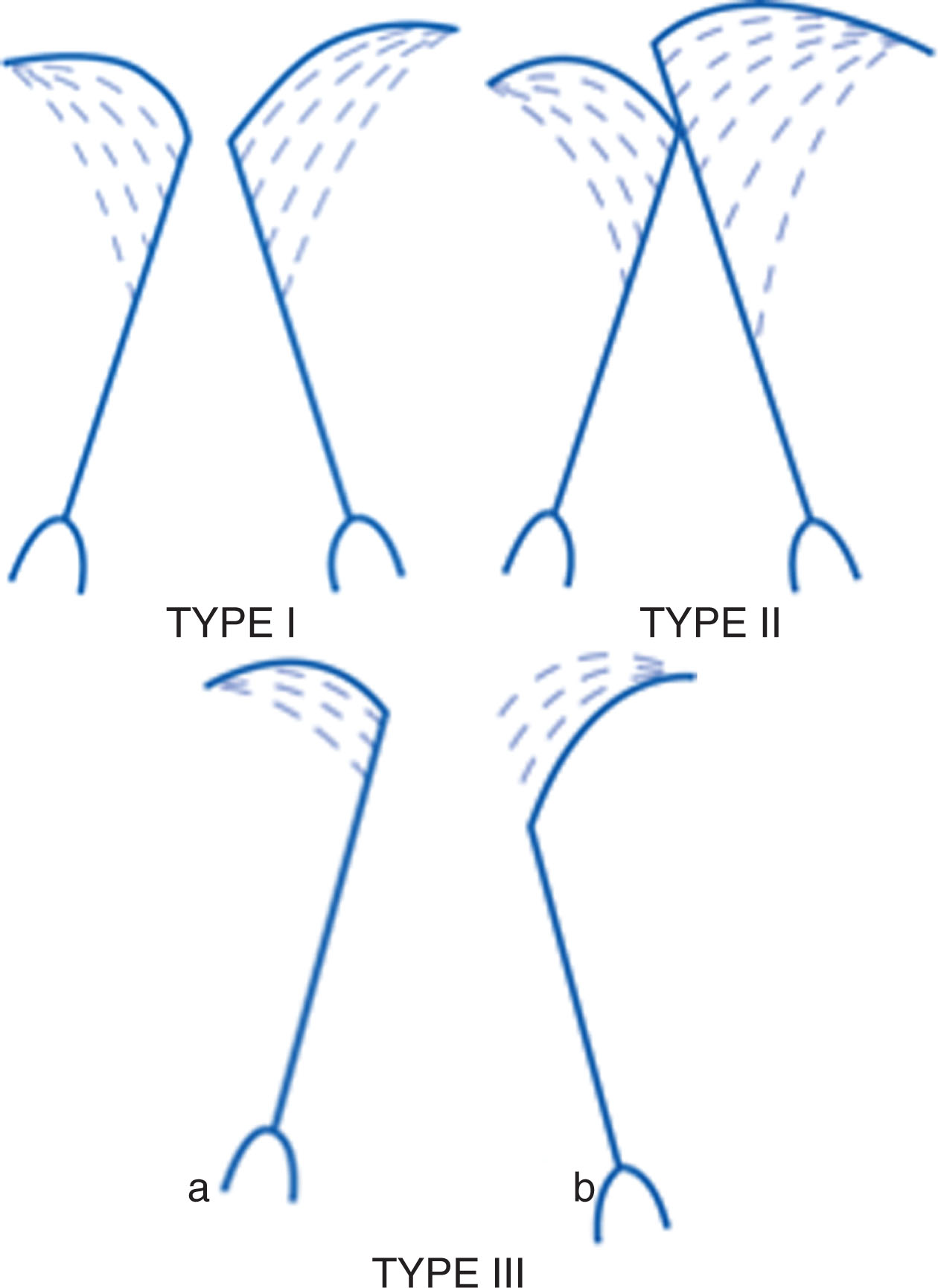
Causes of mitral regurgitation include leaflet and annulus disorders, defective tensor apparatus, and alterations of left ventricular and left atrial size and/or function. The severity of mitral regurgitation is variable, ranging from tenting of the leaflets with left ventricular dilation and dysfunction to mitral valve prolapse or flail leaflet ( Fig. 33.4 ). When the chordal structure is disrupted, a flail leaflet is displaced into the left atrial cavity with mitral regurgitation ( Box 33.1 ).
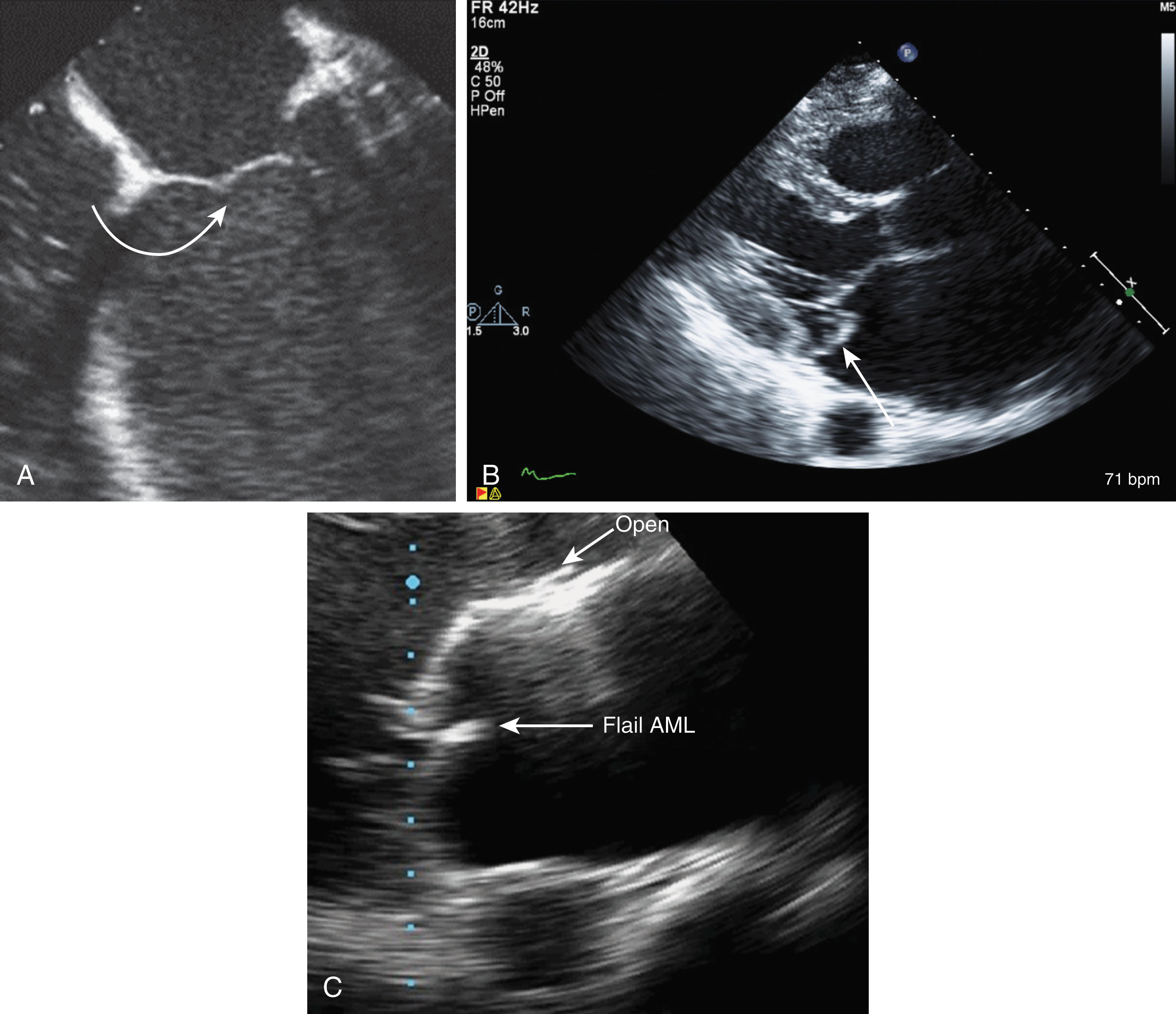
Myxomatous degeneration (mitral valve prolapse)
Flail leaflet
Mitral annulus calcification
Infective endocarditis
Rheumatic heart disease
Congenital abnormalities (cleft, double orifice)
Rare causes: tumor, lupus, connective tissue disease, endomyocardial fibrosis
Ruptured chordae tendineae
Papillary muscle abnormalities
LA enlargement
Dilated LV
Hypertrophic cardiomyopathy
The determination of the severity of mitral regurgitation requires a combination of both two-dimensional (2D) echocardiography and Doppler evaluation. The sonographer should assess the structural appearance of the valve, the size of the left atrium and ventricle, and the function of the left ventricle and quantify the flow velocity of the regurgitant jet and pulmonary vein with pulsed wave (PW) and continuous wave (CW) Doppler ( Fig. 33.5 ). Color flow Doppler is useful to determine the direction of the jet, the number of jets present, the width of the vena contracta, and the proximal isovelocity surface area (PISA) method to calculate the effective regurgitant orifice area to determine regurgitant volume and fraction ( Fig. 33.6 ).
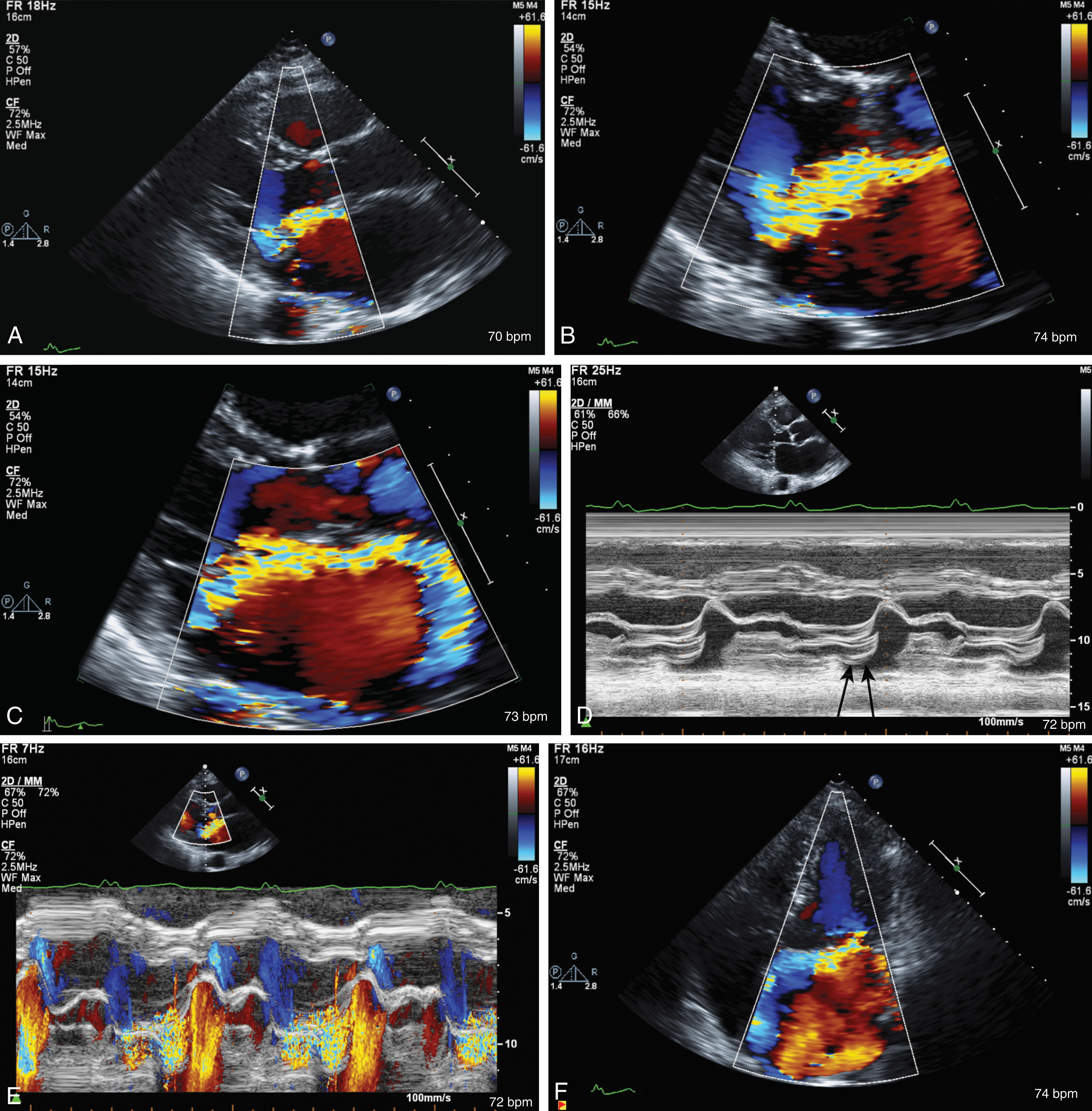
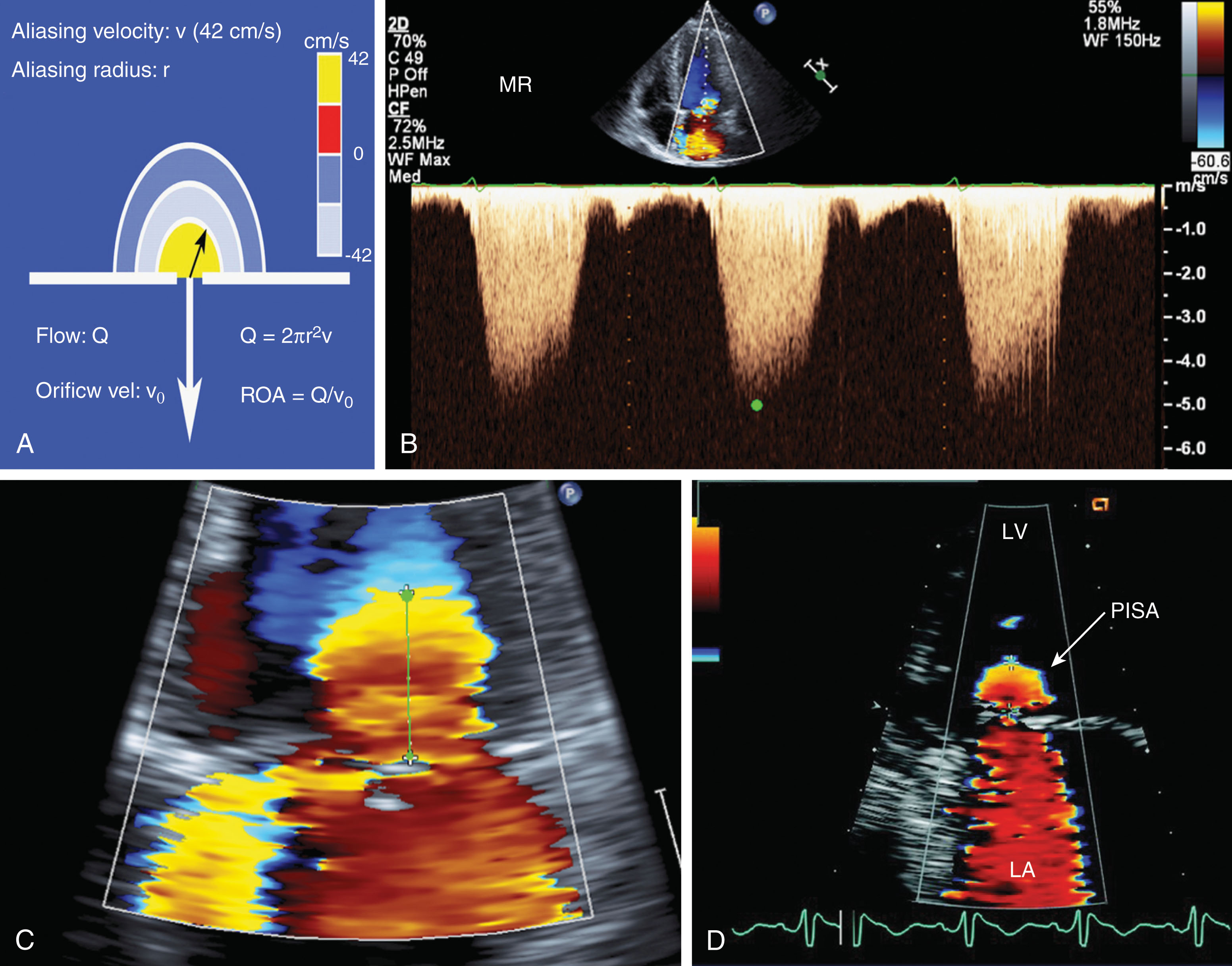
The vena contracta width ( Fig. 33.7 ) should be measured in the parasternal long-axis view at the narrowest portion of the regurgitant jet, just after the orifice. This correlates with the width of the regurgitant orifice and the severity of mitral regurgitation ( Box 33.2 ).
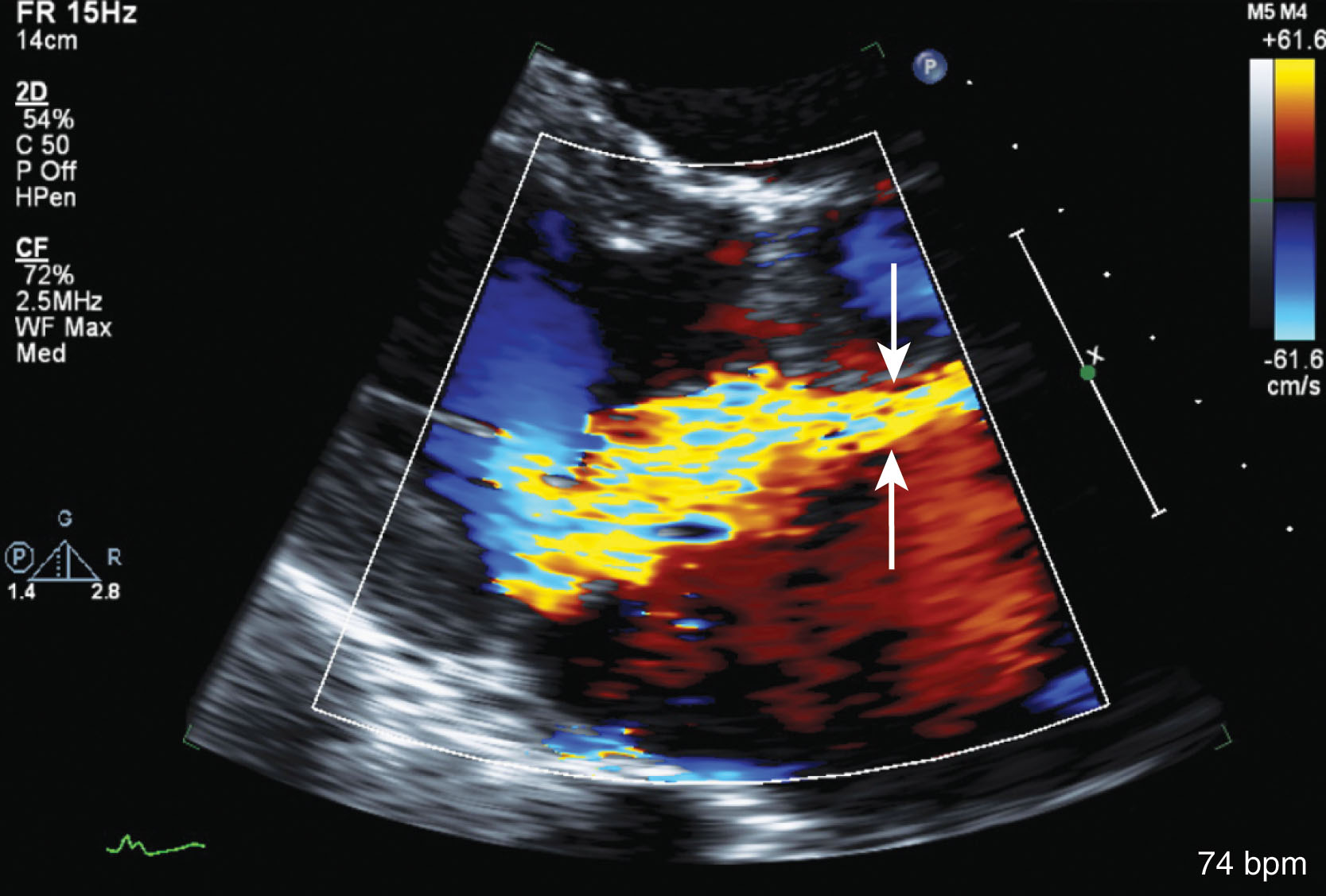
Mild mitral regurgitation: <0.3 cm
Moderate mitral regurgitation: 0.30–0.69 cm
Severe mitral regurgitation: >0.7 cm
The PISA or flow convergence method to calculate regurgitant orifice area is based on the continuity equation and properties of flow dynamics. Flow accelerates proximal to a narrowed orifice and forms concentric shells of increasing velocity and decreasing hemispheres. As the velocity exceeds the Nyquist limit (aliasing velocity), there is an abrupt change in color. This is seen as a distinct colored hemisphere with color flow Doppler. Per the continuity equation, blood flow at the surface of this hemisphere is the same as the flow through the regurgitant orifice.
To measure the estimated regurgitant orifice area (EROA) by the PISA method, these steps are recommended:
Center the mitral valve and apply color flow Doppler. Use the apical four-chamber view that shows the convergence zone optimally.
Zoom in on the flow convergence area on the ventricular side of the mitral valve, and adjust the Nyquist limit to obtain a hemispheric flow convergence area.
Measure the distance between the edge of the hemisphere where color flow Doppler abruptly changes colors to the valve orifice; this is the radius of the hemisphere (r) .
Obtain CW signal of mitral regurgitation jet and measure the peak velocity; this is the mitral regurgitation peak velocity.
Calculate EROA using the following formula:
The limitations of the PISA method are that it is inaccurate when the orifice is nonspherical, the flow convergence zone is nonhemispheric due to eccentric jets, and when multiple jets or regurgitant orifices are present.
The regurgitant volume and fraction can be measured using the continuity equation at the mitral inflow and left ventricular outflow tract. The mitral inflow equals the left ventricular outflow unless there is mitral regurgitation or aortic insufficiency (AI) . The regurgitant volume equals the mitral inflow minus left ventricular outflow. In patients with severe mitral regurgitation, the regurgitant volume is greater than 60 mL, and the regurgitant fraction is greater than 50%.
Quantification of mitral regurgitation by CW Doppler will display severe regurgitation to produce higher intensity Doppler envelopes with high flow velocities. On the other hand, PW Doppler of the mitral valve inflow will show a dominant E wave peak velocity with a short deceleration time (DT) due to the elevated left atrial pressure. If the E point is less than the A point, the mitral regurgitation is probably not severe. This cannot be used if mitral stenosis is present.
Analysis of the pulmonary vein flow into the left atrium with PW Doppler may show systolic flow blunting or reversal due to the mitral regurgitation jet and elevated LA pressure. The blunting of the systolic component of the pulmonary venous inflow indicates moderate mitral regurgitation. The systolic flow reversal indicates severe mitral regurgitation. It is useful to map the regurgitant jet with color Doppler to see if it travels into the pulmonary vein ( Fig. 33.8 ).
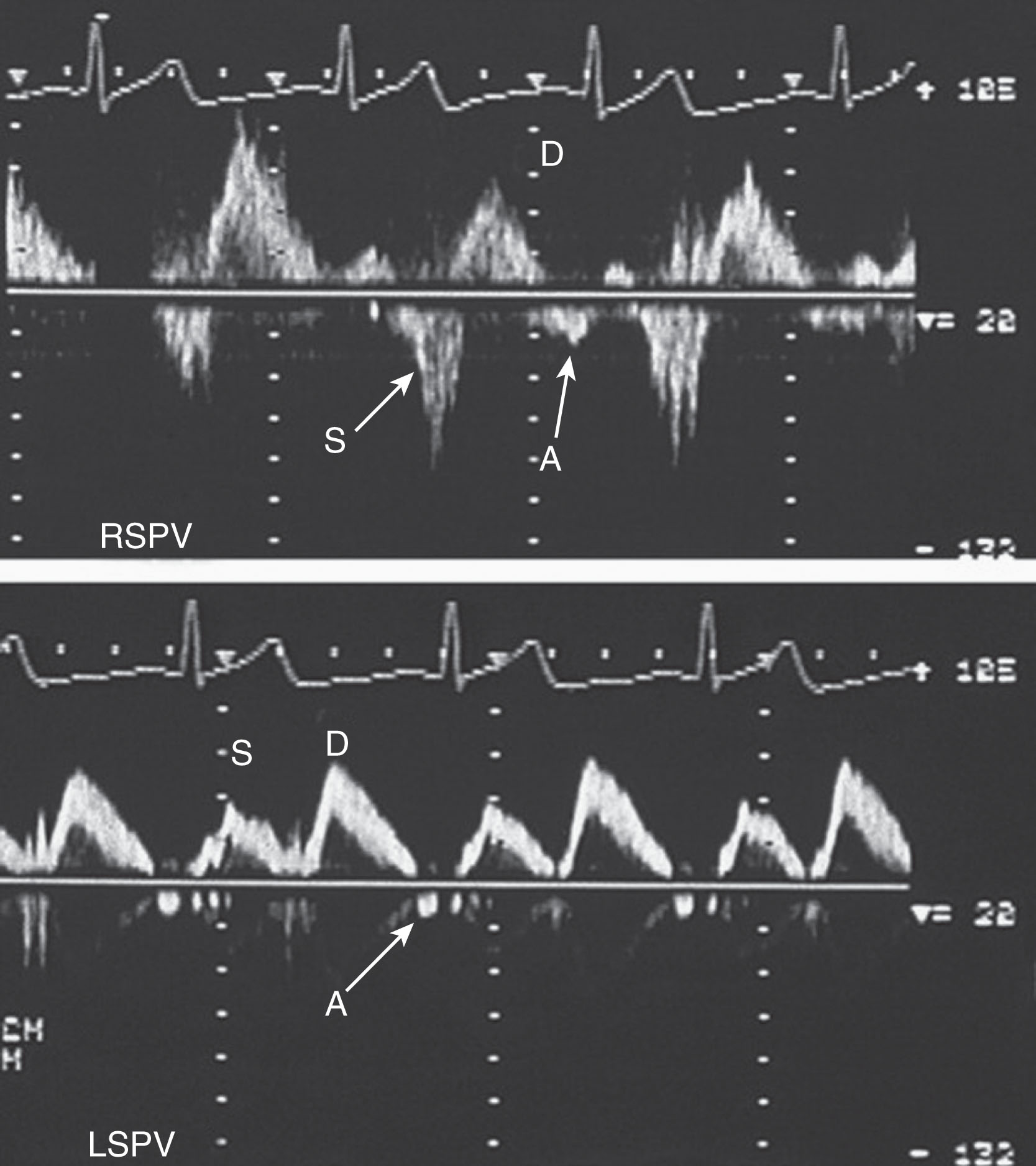
Become a Clinical Tree membership for Full access and enjoy Unlimited articles
If you are a member. Log in here